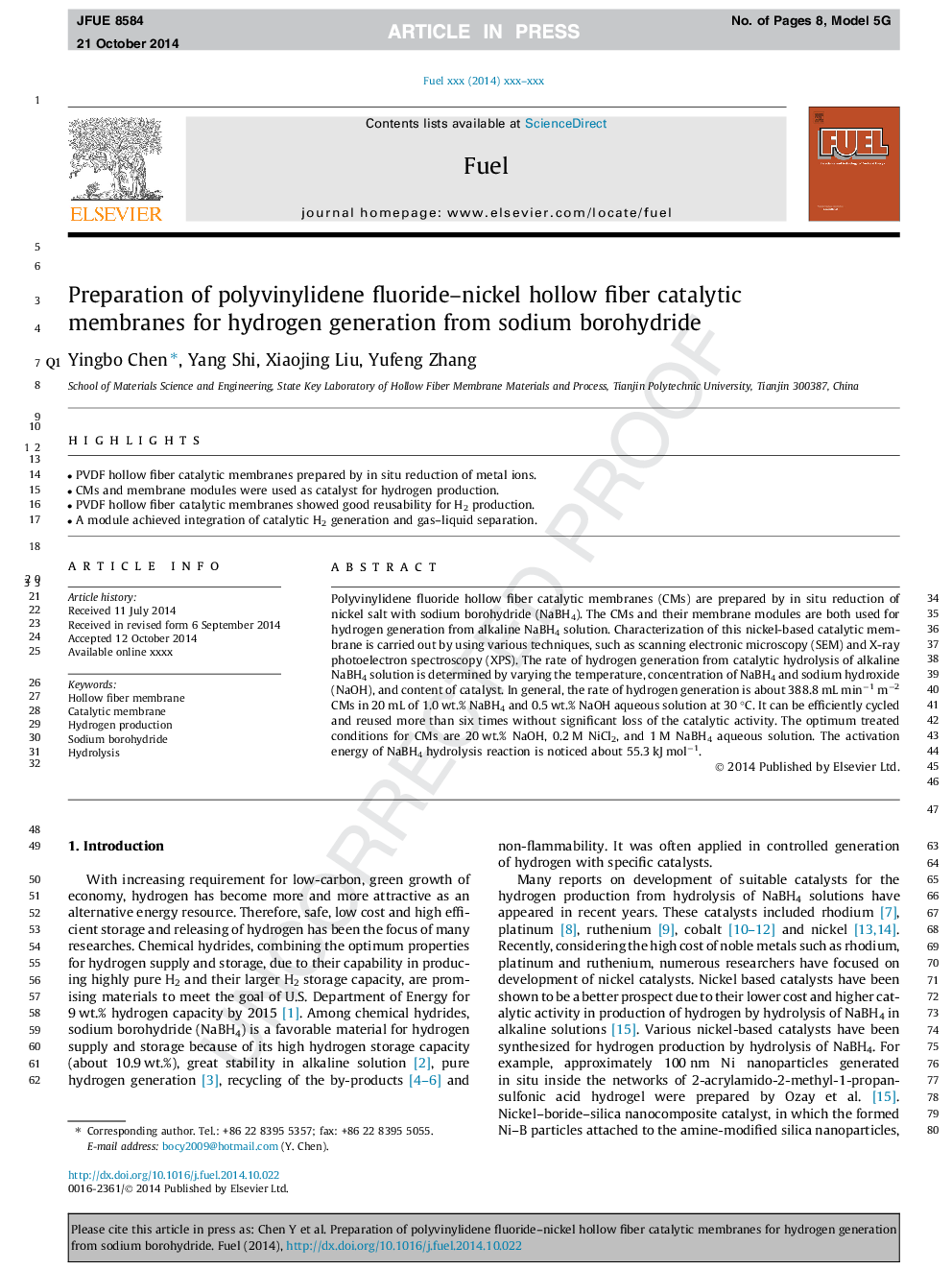| Article ID | Journal | Published Year | Pages | File Type |
|---|---|---|---|---|
| 6636420 | Fuel | 2015 | 8 Pages |
Abstract
Polyvinylidene fluoride hollow fiber catalytic membranes (CMs) are prepared by in situ reduction of nickel salt with sodium borohydride (NaBH4). The CMs and their membrane modules are both used for hydrogen generation from alkaline NaBH4 solution. Characterization of this nickel-based catalytic membrane is carried out by using various techniques, such as scanning electronic microscopy (SEM) and X-ray photoelectron spectroscopy (XPS). The rate of hydrogen generation from catalytic hydrolysis of alkaline NaBH4 solution is determined by varying the temperature, concentration of NaBH4 and sodium hydroxide (NaOH), and content of catalyst. In general, the rate of hydrogen generation is about 388.8 mL minâ1 mâ2 CMs in 20 mL of 1.0 wt.% NaBH4 and 0.5 wt.% NaOH aqueous solution at 30 °C. It can be efficiently cycled and reused more than six times without significant loss of the catalytic activity. The optimum treated conditions for CMs are 20 wt.% NaOH, 0.2 M NiCl2, and 1 M NaBH4 aqueous solution. The activation energy of NaBH4 hydrolysis reaction is noticed about 55.3 kJ molâ1.
Related Topics
Physical Sciences and Engineering
Chemical Engineering
Chemical Engineering (General)
Authors
Yingbo Chen, Yang Shi, Xiaojing Liu, Yufeng Zhang,
